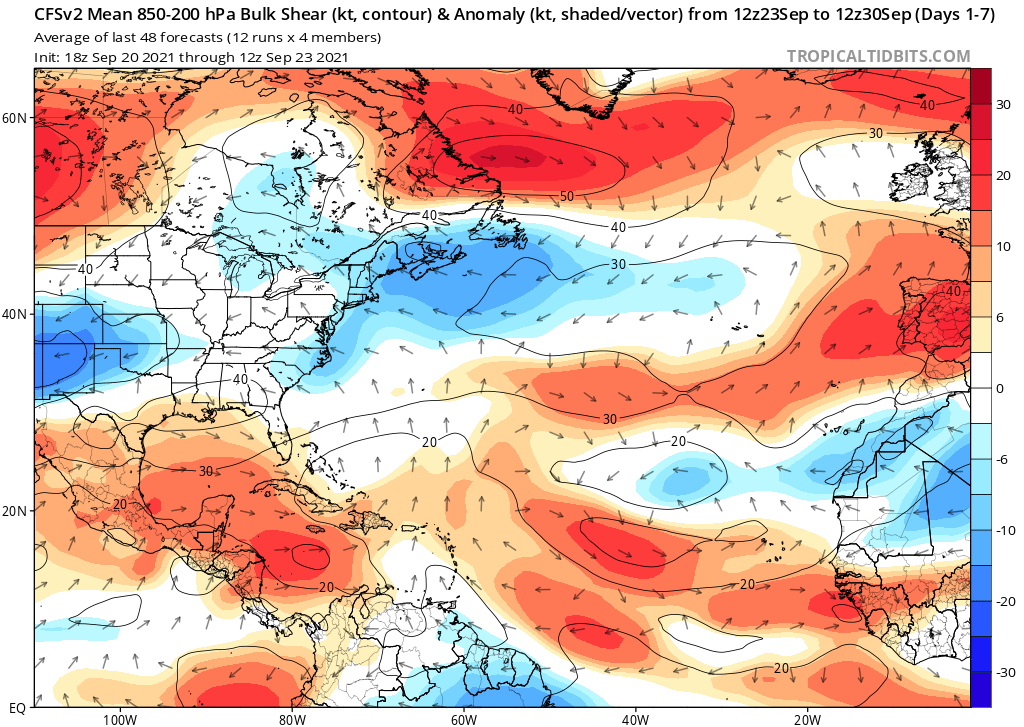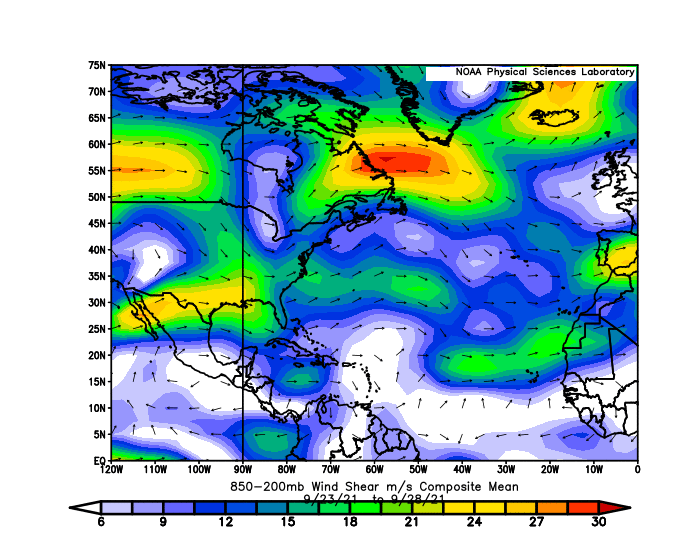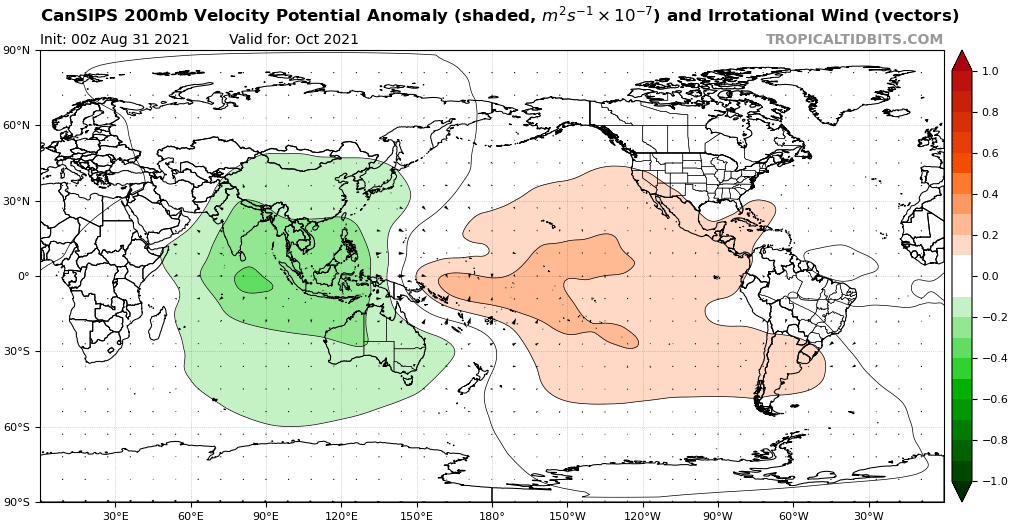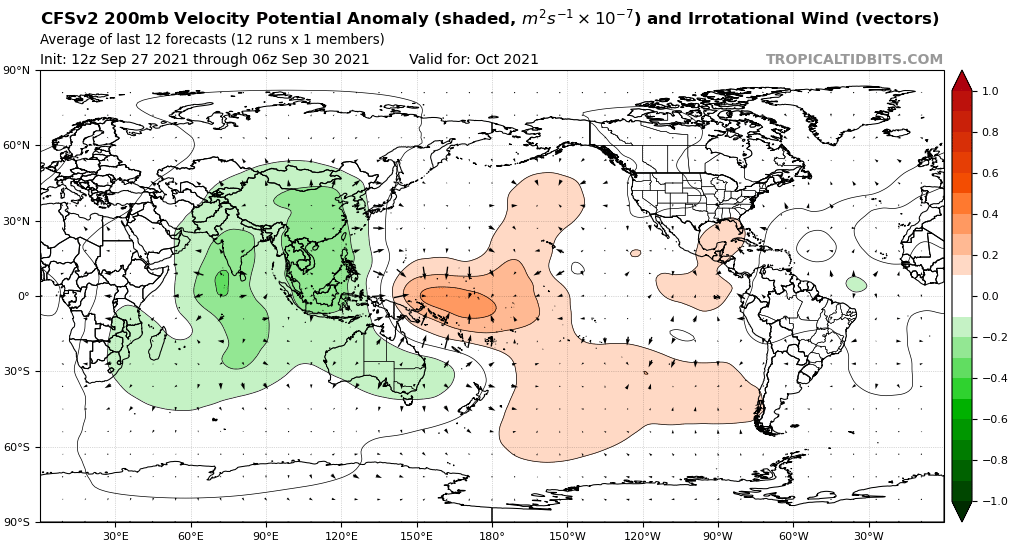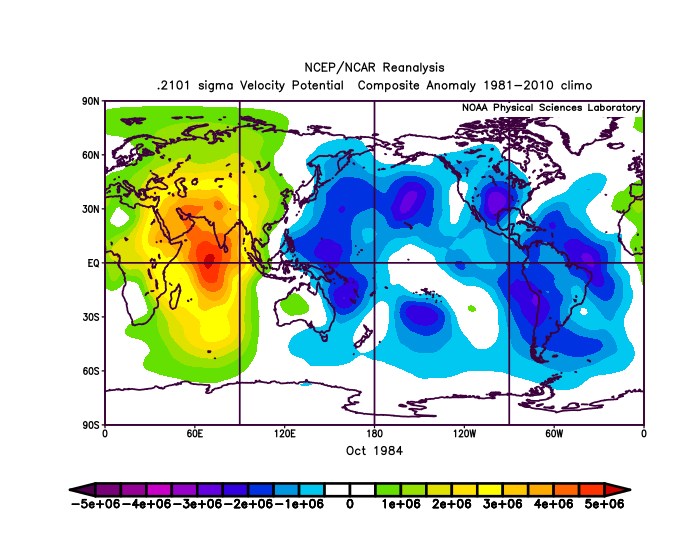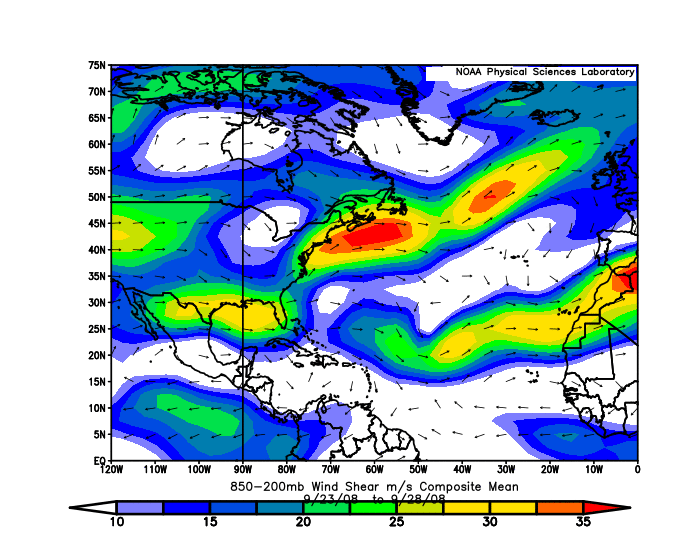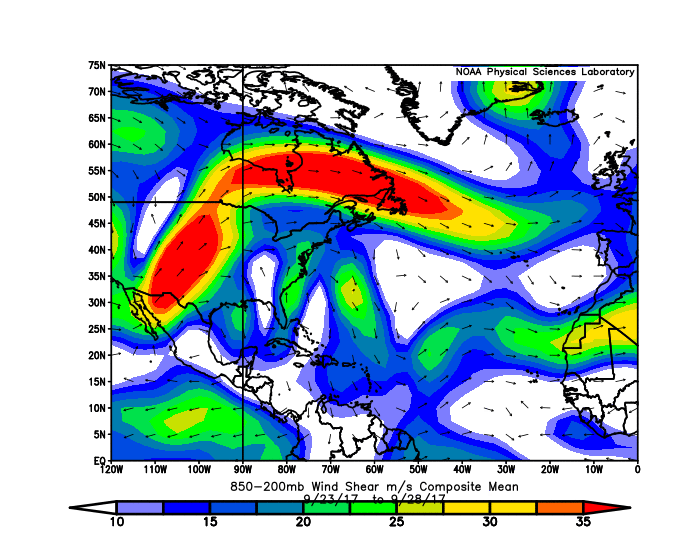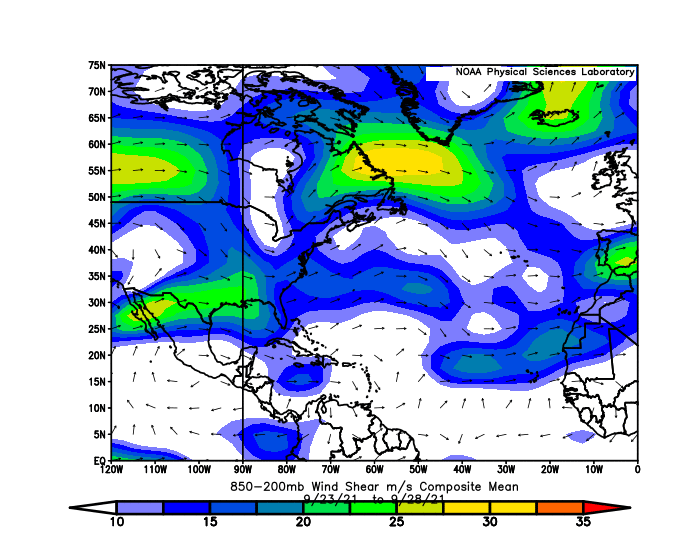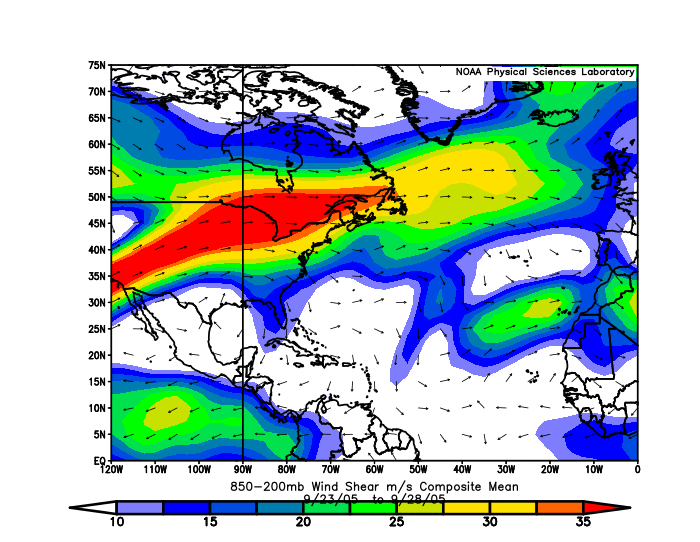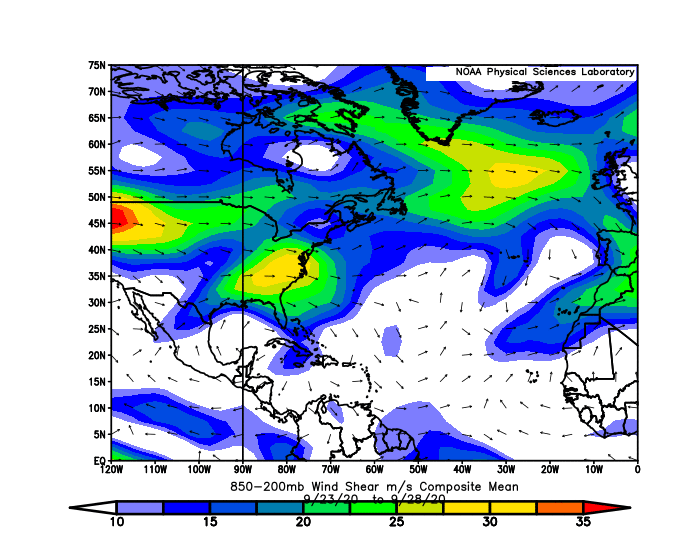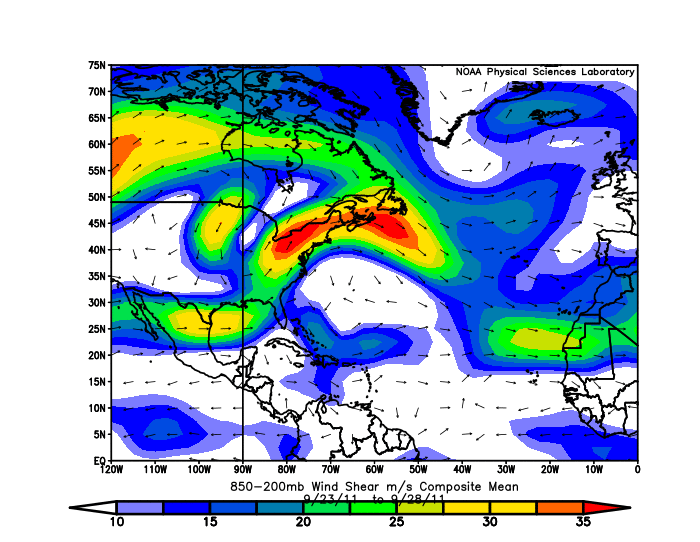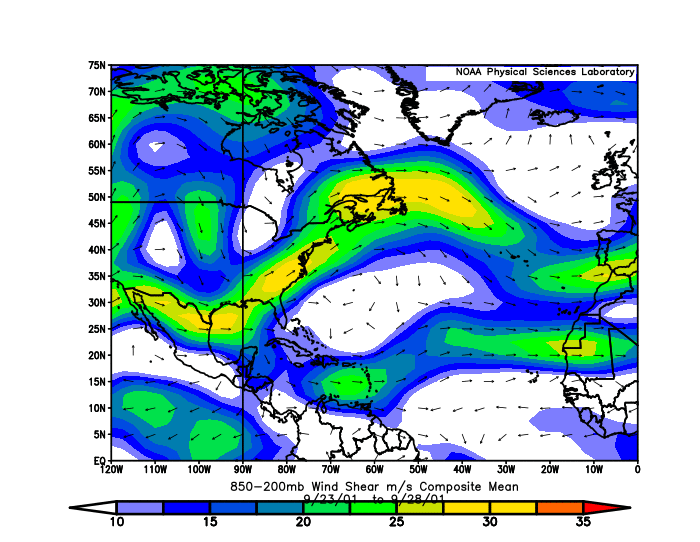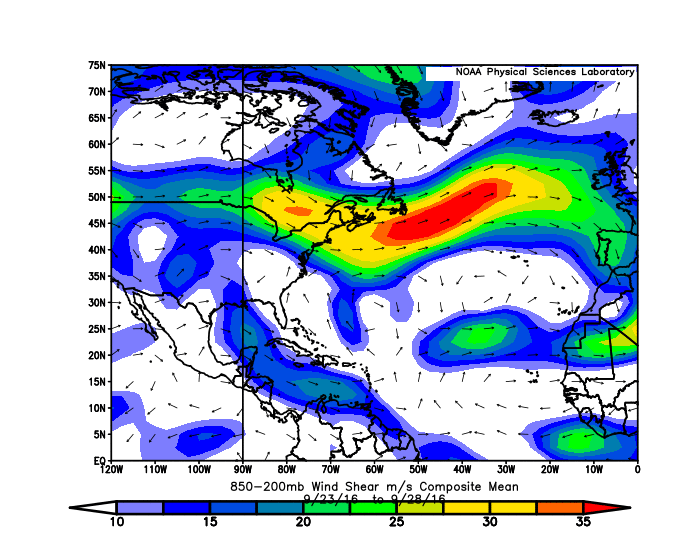It's the last day of September. The month is now at 9-3-2, and 2021 now has the second fastest pace of all seasons in terms of NS count, only behind 2020. September produced two long-tracking MDR majors each with 30+ ACE. One of them was almost a Cat 5, with many people believing it might be recognized as one in TCR and/or is making another run at that intensity. Additionally, a tropical storm is currently forecast to become a rare October MDR hurricane, and it's currently organizing like a WPac typhoon. The month's ACE at the time of writing is approximately 69.9.
Now let's look at some of the bearish comments in this thread since early September and how they verified. I have removed all user names as my intention is not to bring anyone to shame - you might recognize your own comments, but believe me, I am not trying to offend you.
The goal here is to demonstrate how quickly things can change in the tropics, and how hard it is to predict seasonal activity even just one or two weeks in advance.TL;DR: When in doubt of a season's activity, KEEP CALM AND WATCH THE TROPICS.------------------------------------------------------------------------------------------------
A few September cancel posts started popping up around September 5, when Larry was on its way out and models didn't show any additional development. At that time, most of the posts remained rational and was mostly suggesting September would not end up hyperactive, and not literally saying September would be dead. Most people also realized that activity was paused due to unfavorable CCKW, and should resume in late September and October.(Sep 6) wrote:There’s definitely a long range inhibiting factor across the Atlantic not much to speak off in terms of development even at climo peak season.
(Sep 6) wrote:We are in peak season with a major hurricane in the Atlantic and models showing very little. What they did show they backed off on. Face it, every prognostication up to this point has been wrong. No strong hurricanes, no large hurricanes, season will be super busy! 5 to 8 storms in a 15 day period would be quite insane, and if you step back a second you will have to admit nearly impossible. Not every season is going to be mega hyper active, regardless of the indicators. There are multiple pieces of the puzzle we do not understand. What makes a season more or less active than we think it will be is what makes hurricanes seasons interesting, IMO. It will do what it will do, regardless.

The 13-day period from Sep 17 to Sep 29 produced 7 named storms. Even if we ignore Odette and Teresa (who were short-lived, likely subtropical, and questionable to some in the case of Odette), that would still be 5 named storms and enough quality from Sam.
(Sep 7) wrote:Stick a fork in the rest of September if SAL is actually a player

We did get a SAL outbreak like the models predicted, but Sam basically shrugged it off and reached Cat 4 while riding the southern boundary of a SAL plume. Even though it later on had occasional dry air intrusions, it still remained a major for several days.
(Sep 8) wrote:So can we admit that the MDR is underperforming relative to expectations for a second consecutive year?
(Sep 9) wrote:I'm expecting another big burst in activity, but I think at this point hyperactive is off the table, as it should be. One would hope hyperactive seasons are quite rare. This talk of hyperactivity has also diminished, in my opinion, how destructive non hyperactive seasons can be.

Current 5-day forecasts for Sam and Victor would bring us to 145+ ACE, just less than 15 units from the hyperactive threshold of 159.6.
------------------------------------------------------------------------------------------------
After September 10 is when the month cancel posts really began. Multiple active users were doubting even the possibility of anything substantial forming, which at one time made up half the posts (though there are also some obviously bullish users who insisted on more activity). This also coincided with the time when Euro backed off from its incredibly bullish pre-Peter forecasts, and the pre-Peter invest itself developed much later than expected with its development chances being reduced.
Many other posts that are not quoted here did not directly suggest that nothing would form, but instead "prepare for an active October".(Sep 13) wrote:I would personally use September 20, rather than today's date, as a metric--storms like Lee, Maria, or Teddy had either already formed or were on the verge of formation, and had high model support for becoming strong hurricanes--the present model trend is towards there being no hurricanes (let alone majors) during the forecast period.
We're highly unlikely to have any majors (or any hurricanes at all) in the next week given the open Atlantic as everything (Larry included) has underperformed over the open Atlantic.

Sam formed near the end of the 10-day forecast period, on Sep 22.
(Sep 14) wrote:If the tropics continue to underwhelm worldwide after Chanthu/Larry/Nicholas, could this be foreshadowing a circulation collapse next year like in 2013? I recall people saying that 2012’s struggle storms (lots of formation but lots not reaching their full potential) was a sign of what was to come next season.

Besides the Atlantic, don't forget WPac produced another Cat 5 Mindulle, that is also shaping up to be a long-lived major just like Sam.
(Sep 14) wrote:2021 almost certainly will not get anywhere close to 2005 or 2020 levels of activity. Just because a favorable phase is coming up does not guarantee record levels of activity.

With 9 named storm formations, September 2021 is now the month with second highest named storms total. In terms of ACE, it is also doing better than September 2005 and 2020.
(Sep 14) wrote:This year seems like it's behaving more like 1985 or 2007, where the overwhelming majority of the open Atlantic either struggles or is void of storms (this year having Larry as an obvious exception), while everything near land peaks around landfall--look at Dean and Felix for example in 07 compared to the rest of the basin.
(Sep 16) wrote:If none of the three AOIs currently develop, the unfavorable MJO phase will likely halt development for weeks, and September will have had just 3 NS — lower than every other season of the current active stretch. Sept 2021 would be the weakest since 2016 despite Larry; 2017 had multiple long-trackers while 2018, 2019, and 2020 had other significant storms like Helene, Leslie, Humberto, Jerry, Lorenzo, Paulette, and Sally before or after their highest ACE long-tracker. Mindy was brief and Nicholas, while a hurricane landfall, is a far cry from the other storms I mentioned in both intensity and duration.
If no additional storms form, this would raise several questions: what killed September’s momentum despite climo peak coinciding with a developing Nina and an under-performing Pacific? Could we see a double-peak season like 2016 where both peaks are well before/after the normal peak in mid-September? And does this signal what the 2022 season could be like?
(Sep 16) wrote:It was noted by someone, a tweet maybe, that the jet stream was anomalously far north. I wonder
if this actually sets up poorer conditions than expected, even though nina is present. The exciting thing is that we only learn when the unexpected happens, so like a 2013, now we might know what else to look for. Or not.

(Sep 16) wrote:I think you are clinging too hard to the idea that September was going to be hyperactive. Realistically a 10 named storm September was never likely even if the VP anomaly pattern was ideal. It's not unusual for September to be less active than August in years where August is very active. We've seen 3 storms this month including Larry (3-2-1), but it's possible we don't see another hurricane this month and ACE for the remainder of the month may be lackluster. I wouldn't be surprised if October was more active than normal, though.
(Sep 16) wrote:Nothing I'm seeing right now points to a hyperactive September. -CCKW and an unfavorable MJO phase are about to hit and last for the next few weeks. That doesn't mean nothing will form obviously, but I think a hyperactive 7+ named storm September is highly unlikely at this point. Late August and early September was the active phase this year, now late September is is the less favorable phase, which means October will likely be a favorable phase again. My guess is that the rest of September will not have a whole lot, followed by a dangerous burst of activity sometime in October.
(Sep 16) wrote:Everything out in the open Atlantic post-Larry has been hitting a wall or just falling apart entirely. Even Larry itself struggled in a marginal atmosphere and a marginal thermodynamic environment. Since the month only has 2 weeks left, a bunch of hurricanes forming and going bonkers across the basin (so as to meet the definition of a hyperactive September) when the intraseasonal state is pretty bad would be rather surprising at this point.
2021 does seem to be a year with a strong intraseasonal influence and it's reasonable to speculate that October could be more active based on the enhanced MJO predicted to arrive during the month. But IMO a hyperactive September is off the table. Probably a couple more systems and even a hurricane or two which would make the month average/slightly above-average at most but not hyperactive.
(Sep 16) wrote:September is already over half over. So far it has probably been about average, if not slightly above if you include Larry. Overall so far this September has been a lot less active than 2017-2020, as we have not even had a time with simultaneously active hurricanes so far this year. The MDR has not seen any TC develop since Larry. 95L and 96L still may develop but neither appear likely to be strong at this moment. The models aren't showing much of a signal for anything behind the 0/20 wave for the next 10 days. We could see activity perk up again at the very end of September, but it's not unreasonable to say activity will be below average for the next 7-10 days. The EPS seems to have a bias to show -VP200 over Africa and the IO all the time, it seems as if the suppressed phase will be a negative factor for development for the next week or two.
Thus far, your prediction of a hyperactive September has not verified.

10 days from that is Sep 26, when Sam officially peaked at 135 kts.
------------------------------------------------------------------------------------------------
Peter and Rose both formed on September 19. They shut down the month cancel posts for a short while, but the focus quickly shifted to lack of quality, especially when Peter and Rose were battling strong shear and became naked swirls.(Sep 18) wrote:I respectfully disagree. One would have expected higher ACE during peak season, given -ENSO/-PDO/+IOD/-VE.
(Sep 18) wrote:I think everyone here was expecting a September with plenty of land threats and, you know, normal September activity. But it’s been pathetic with the exception of Larry, which was limited by some factor we don’t truly understand yet. The other two invests now don’t seem like they’ll contribute much to the ACE total either, and then after that the basin will probably shut down for a few weeks (I don’t buy the model forecasts for more MDR systems).
2021 could potentially end up with below-average ACE if the enhanced phase in October somehow doesn’t yield anything. If so, forecasts from some of the top organizations in the field will bust quite badly, and extensive research will be needed to figure out why.

2021's ACE has already passed the average threshold. If the current 5-day forecasts for Sam and Victor play out, we would be well over the above-average ACE on Oct 5.
The season as a whole is currently at 20-7-4. With the exception of H count, it already meets or surpasses every agency's final forecast. CSU forecasted 150 ACE in August; Sam and Victor might bring us to just within 10 units below that.
(Sep 18) wrote:Can't help but wonder if we end up hurricane-free the rest of September at this rate. Models seem to just spin up storms and then fizzle the closer it gets.
(Sep 19) wrote:Given the massive amount of shear and widespread PV streamers that are out there, I can't help wonder if there's something similar to 2013 with the ocean circulation going on (and similarly if this happened to some degree later in the 2007 season as well) or if there's some unknown factor specific to this sort of La Nina.

Reminder: When making 2013 comparisons, focus on the underlying background conditions and not just the quantity and quality of storms. But even then, it's clear that 2021 has much better conditions than 2013.
(Sep 19) wrote:Are we sure conditions will become more favorable in that short of a time frame? I thought the suppressed MJO phase was supposed to peak at the end of September.

We technically haven't left the suppressed MJO phase yet. Sam and Victor, as well as other weaker storms, seem to be related to a CCKW passage. And yes, Sam bombed out when there's anomalously sinking air.
(Sep 19) wrote:Yeah we have a serious dearth of quality this September. Clinging to storm counts to try to compare this year to 2005 at this point is...like going trick or treating and getting a ton of candy corn. No one wants that stuff. In a season with high expectations folks are looking for quality in september and they haven't gotten it. Still, for those that like a lack of stress, upright trees and functioning power, this peak season relative tranquility has been a blessing. I'll be shocked if someone doesn't get a good scare (or worse) from a significant storm in October..but the free pass at the apex of climo mountain is as nice as it was unexpected.
(Sep 19) wrote:From a numbers perspective I could see 20+ named storms happening with a potential shot at the auxiliary list. From a quality perspective? I expect October to have stronger storms than September due to the MJO being in a more favorable position, but neither Peter nor 16L look likely to become strong at this time. Chances of 2021 reaching 150+ ACE are decreasing, without nothing short of a 2020-esque late season.
If 2021 finished like 21-8-4 I wouldn't say it rivaled 2005 and 2020.
(Sep 20) wrote:While both years featured strangely similar August activity, September is setting this year apart quite dramatically from those two--2020 had four hurricanes during September (this year looks like it'll have to try extra hard just to reach three) and five storms active at once. 2005 had already seen five hurricanes by this point, including two majors, and didn't really see any struggling storms. Both years also had at least one instance of three active hurricanes at once--this year is struggling just in maintaining two named storms at once, and has at no point had multiple hurricanes at any given time.
We're seeing a strange combination of overperforming storms in the Gulf, but the Gulf/Caribbean drastically underperforming in the total number of storms, while the open Atlantic underperforms in intensity with most systems struggling to exceed 50 mph.

Even though 2021 didn't have concurrent hurricanes (that might change soon with Victor), September 2021 has more ACE and more long-trackers than both September 2005 and 2020. Its major hurricane count is also tied with 2005 (which had Maria and Rita) and surpassed 2020 (just Teddy).








